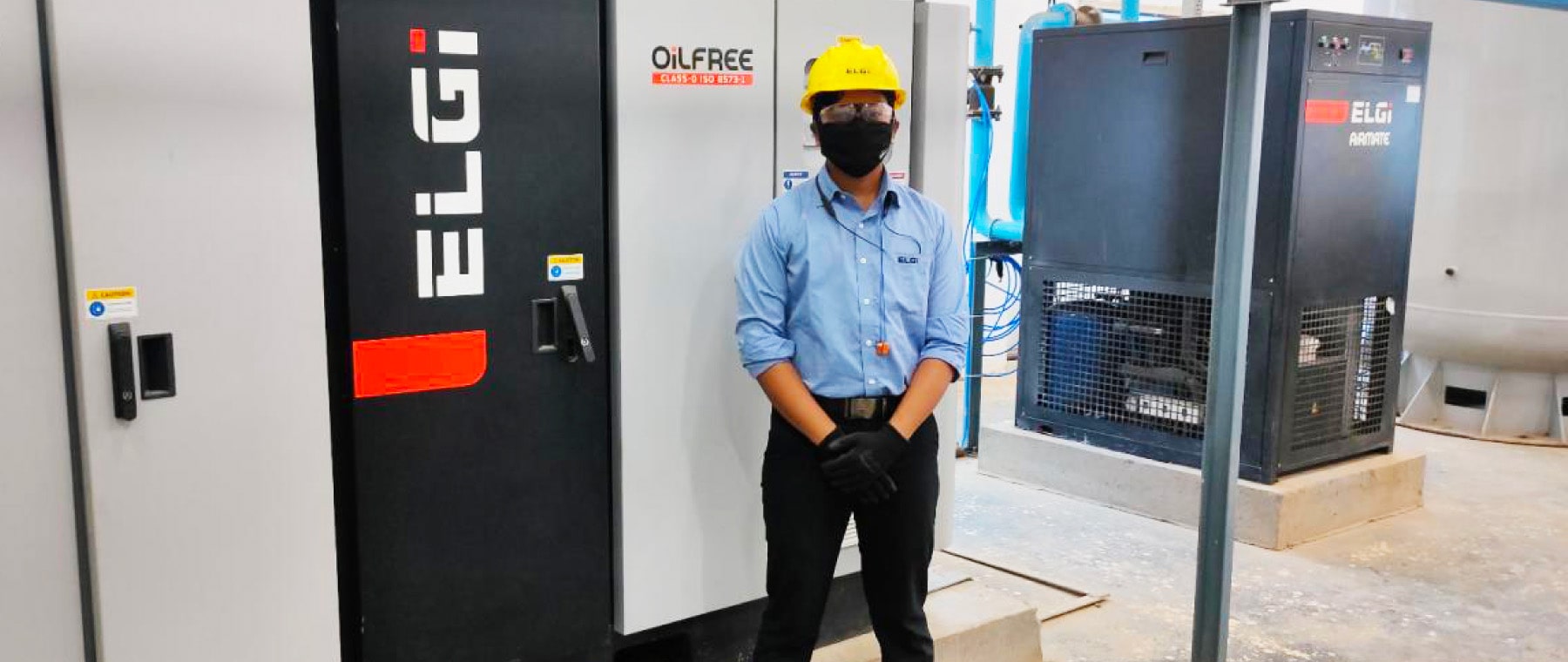Consultant - Screw compressor5 ESSENTIAL STEPS FOR A SUCCESSFUL AIR COMPRESSOR INSTALLATION

Once a compressor is purchased, we get ready for the installation. During this stage, it is very important to make sure that the compressor is installed as per the manufacturer's guidelines. This will make sure that the compressor lasts long, provides optimum performance, and reduces energy costs.
Take a look at the key points to focus on a compressor’s installation.
1. Location
The most important aspect is the location. During installation, we need to ensure there is sufficient area available for the unloading, installation, operation, and maintenance of the compressor. The designated area must be equipped with enough clearance around it.
Please note that, for rotary screw compressors, however, no special foundation or anchoring is required. The compressor must be placed on a level surface that can withstand the load of the compressor and the equipment used to move it.
Furthermore, we must make sure the compressor is protected from natural elements like rain, sunlight, hot air, and other deterrents like toxic or flammable materials and corrosive agents like ammonia, chlorine, salt spray, and other chemicals as they erode the internal components, contaminate the oil and damage the filters.
2. Ventilation
Next up is ventilation. A lack of ventilation and cooling is the leading cause for trouble in air compressors. The electricity delivered to your compressor is completely transformed into heat during compression and that heat is dissipated into the compressor room.
To make sure your compressor is sufficiently cooled, the following measures can be adopted:
Natural ventilation:
If the temperature inside the compressor room doesn’t exceed 5 ˚C when compared with the ambient temperature, the natural ventilation is sufficient.
You may also ensure ventilation through alternatives such as:
Forced ventilation with an exhaust fan: Install an exhaust fan if the temperature inside the compressor room exceeds 5 ˚C.
Forced ventilation with ducts: Ensure the hot air exhaust from the compressor is diverted through ducts when it is installed in an enclosed area.
Install a cabinet heater if the air inlet temperature drops below ambient temperature. Use the cold start kit and heater in the compressor room to maintain the temperature at 0˚C - 50˚C.
3. Electricals
Make sure that the electrical service voltage matches the voltage on the compressor nameplate (located inside the electrical cabinet) before installing the compressor.
The compressor should be:
Properly grounded
Properly equipped: The appropriately sized fuse or circuit breaker should be installed between the compressor and the main electric service.
The actual operating voltage must be within +/- 10% of the compressor nameplate voltage. Insufficient or excessive voltage will directly affect the compressor's electrical system.
For variable speed drive units, make sure that the power supply transformer has a symmetrical, three-phase supply. In a symmetrical three-phase supply, the phase angles and voltage are all the same.
Here’s an additional tip: provide the power supply to the compressor through a dedicated switch disconnector fuse (SDF). Mount a suitable SDF unit of rating within 5 meters of the compressor. This helps to carry out maintenance without stopping more than one compressor.
4. Air storage
An air receiver tank is an integral and important part of any compressed air system. The selection of an air-receiver is crucial to meet the demand of the plant and the effective operation of the compressor (load / unload).
In a compressed air system, a receiver tank provides the following benefits:
- The receiver tank acts as a reservoir of compressed air for peak demand.
- The receiver tank helps remove water from the system by allowing the air to cool.
- The receiver tank minimises pulsation in the system caused by a reciprocating compressor or a cyclic process downstream.
Receiver tanks are required to have a pressure relief valve and a pressure gauge. The relief valve should be set to 10% higher than the working pressure of the system.
It is also important to install a manual or automatic drain on the receiver tank to remove water from the system.
5. Piping
The correct size of pipework is important to provide sufficient flow and steady pressure to all points of use. Pipe diameter directly impacts the pressure drop. Discharge piping must be at least the same diameter as the compressor discharge outlet.
Pipe selection directly affects three key elements of a compressed air system (flow, pressure, and air quality). Poor choice of pipe materials, diameter, and layout causes flow restrictions and frequently results in a significant pressure drop.
Pipe bends are an additional source of friction losses in compressed air piping. The pressure drops due to an increase in friction with the flow. Friction loss is also affected by the pipe type and the length of the pipeline.
The compressor air outlet must be on top of the common/main header pipe to avoid condensed water entry when the compressor is idle. Make sure the air inlet to the receiver is at the bottom, and the outlet from the receiver is on the top to avoid moisture-free air to the dryer or customer equipment.
The pipelines must be flushed before downstream filters like the prefilter, fine filter, and carbon filters are assembled. Make sure the water drain is in provision with the auto drain for the air receiver, downstream filters, and dryers. We must also provide a bypass for piping arrangements of the dryer and downstream filters in case of isolation.
A good installation of a compressor system makes all the difference in performance, efficiency, and the overall lifecycle of the system and prevents direct or indirect expenses in the future.
